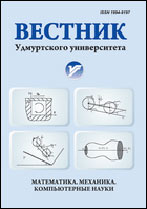|
This article is cited in 1 scientific paper (total in 1 paper)
MECHANICS
Evolution of the pollution in the Sea of Azov by satellite data and simulation results
T. Ya. Shul'ga
Marine Hydrophysical Institute, Russian Academy of Sciences, ul. Kapitanskaya, 2, Sevastopol, 299011, Russia
Abstract:
Methods of sharing information obtained by methods of remote sensing of the sea surface from space and numerical solutions are discussed in this paper. The results of numerical modeling and data of satellite observations on the state of the waters of the Sea of Azov for the period
2013–2014 are summarized on the basis of developed algorithms. Three-dimensional hydrodynamic modeling of water dynamics and evolution of contaminants in the Sea of Azov is performed using the model of POM (Princeton Ocean Model) with a real atmospheric forcing SKIRON. The joint analysis of numerical solutions and data of space monitoring Aqua (MODIS) allows to study the features of the spatial and temporal distribution of pollution in the Sea of Azov. New model algorithms are used to analyze the consistency of the results of numerical solutions, satellite observation data and their combination. The dynamic-stochastic method of assimilating satellite information is used, which makes it possible to obtain an estimate of the quality of the model prediction depending on the intervals between the assimilation of satellite data.
Keywords:
Sea of Azov, evolution of passive admixture, remote observations, numerical modeling, assimilation of satellite data, Kalman filter.
Received: 30.06.2017
Citation:
T. Ya. Shul'ga, “Evolution of the pollution in the Sea of Azov by satellite data and simulation results”, Vestn. Udmurtsk. Univ. Mat. Mekh. Komp. Nauki, 27:3 (2017), 450–459
Linking options:
https://www.mathnet.ru/eng/vuu600 https://www.mathnet.ru/eng/vuu/v27/i3/p450
|

| Statistics & downloads: |
| Abstract page: | 270 | | Full-text PDF : | 169 | | References: | 38 |
|




 Contact us:
Contact us: Terms of Use
Terms of Use
 Registration to the website
Registration to the website Logotypes
Logotypes








 Citation in format
Citation in format 
